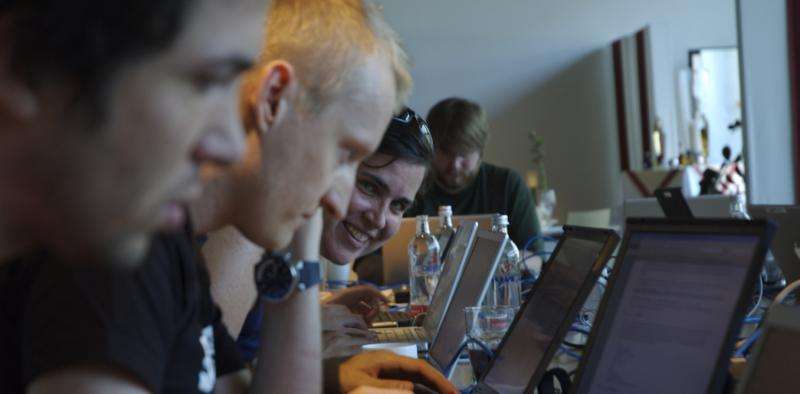Credit: Andrew Eland/Flickr, CC BY-SA
Digital activism has transformed political protest in the last two decades. Smartphones and the internet have changed the way political events, protests and movements are organised, helping to mobilise thousands of new supporters to a diverse range of causes. With such activity becoming an everyday occurrence, new forms of digital activism are now emerging. These often bypass the existing world of politics, social movements and campaigning. Instead, they take advantage of new technologies to provide an alternative way of organising society and the economy.
We've become used to the idea of digital activism and social media being used to publicise and grow political movements, such as the Arab Spring uprisings in the Middle East and the anti-austerity movement Occupy. Activists, such as those in recent French labour protests, can now live stream videos of their actions using apps such as Periscope while online users contribute to the debate. In Barcelona, the party of new mayor Ada Colau drew up its electoral programme with the help of over 5,000 people, in public assemblies and online, including the formation of network of cyberactivists, SomComuns.
So-called hacktivist organisations such as Anonymous regularly attack the computer networks of the rich and powerful, and even terrorist organisations such as Islamic State . The recent Panama Papers follow similar revelations by Wikileaks and Edward Snowdenas examples of "leaktivism". Here, the internet is used to obtain, leak and spread confidential documents with political ramifications. The Panama leaks have led to protests forcing Iceland's prime minister to step aside and calls for similar action in the UK.
Quiet activism
All these forms of online activism are essentially designed to force change by putting political pressure on leaders and other powerful groups in the real world. But new kinds of digital activity are also attempting to change society more directly by giving individuals the ability to work and collaborate without government or corporate-run infrastructures.
First, there are quieter forms of digital activism that, rather than protesting against specific problems, provide alternative ways to access digital networks in order to avoid censorship and internet shutdowns in authoritarian regimes. This includes bringing internet access to minority and marginalised groups and poverty-stricken rural areas, such as a recent project in Sarantaporo in northern Greece.
But it also involves more unusual technological solutions. Qual.net links your phone or computer to an ad-hoc network of devices, allowing people to share information without central servers or conventional internet access. In Angola, activists have started hiding pirated movies and music in Wikipedia articles and linking to them on closed Facebook groups to create a secret, free file-sharing network.
Second, there are digital platforms set up as citizen, consumer or worker-run cooperatives to compete with giant technology companies. For example, Goteo is a a non-profit organisation designed to raise money for community projects. Like other crowdfunding platforms, it generates funding by encouraging lots of people to make small investments. But the rights to the projects have been made available to the community through open-source and Creative Commons licensing.
The example of the Transactive Grid in Brooklyn, New York, shows how blockchain – the technology that underpins online currencies such as Bitcoin – can be used to benefit a community. The Transactive blockchain system allows residents to sell renewable energy to each other using secure transactions without the involvement of a central energy firm, just as Bitcoin doesn't need a central bank.
These platforms also include organisations that help people to share goods, services and ideas, often so that they can design and make things in peer-to-peer networks – known as commons-based peer production. For example, fablabs are workshops that provide the knowledge and hardware to help members make products using digital manufacturing equipment.
Greater democracy and co-operation
What links these new forms of digital activism is an effort to make digital platforms more democratic, so that they are run and owned by the people that use and work for them to improve their social security and welfare. Similarly, the goods and services these platforms produce are shared for the benefit of the communities that use them. Because the platforms are built using open-source software that is freely available to anyone, they can be further shared and rebuilt to adapt to different purposes.
In this way, they may potentially provide an alternative form of production that tries to address some of the failures and inequalities of capitalism. Using open tools, currencies and contracts gives digital activists a way to push back beyond the louder activity of aggressive cyberattacks and opportunistic social media campaigns that often don't lead to real reform.
The internet has always allowed people to form new communities and share resources. But more and more groups are now turning to a different set of ideological and practical tools, creating cooperative platforms to bring about social change.
Source: The Conversation
This article was originally published on The Conversation. Read the original article.
![]()




















